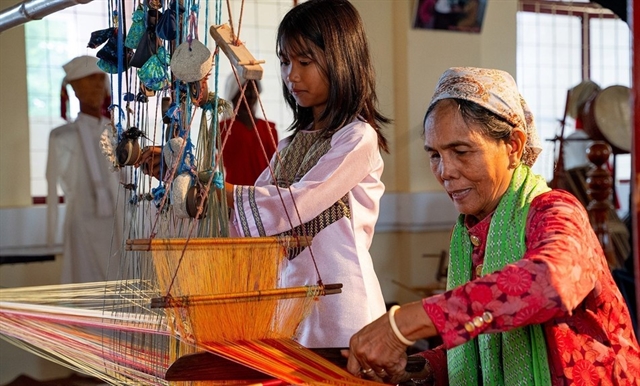 Features
Features
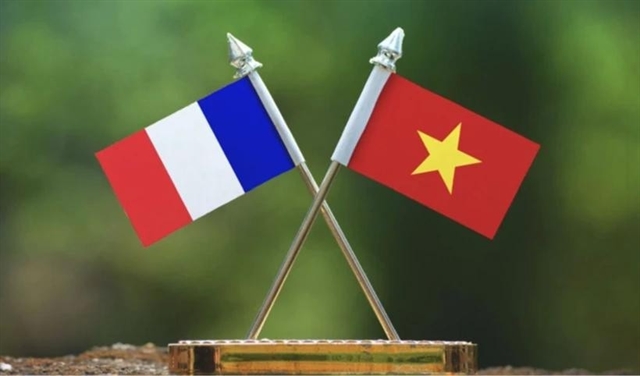
A self-managed POW Museum tells stories of barbaric torture and astounding courage
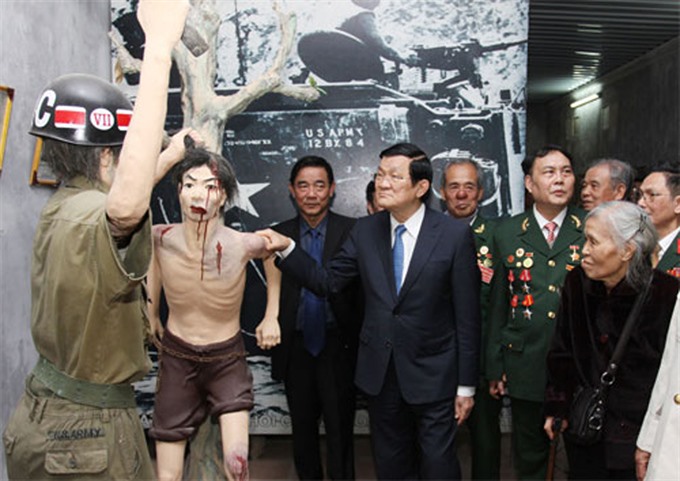 |
| Former President Trương Tấn Sang (centre) visited the museum last year. |
By Minh Thu – Phúc Huy
A national flag the size of a matchbox doesn’t look like much.
But there is one such flag worth far more than its weight in gold. It carries with it a story of tears, torture and awe-inspiring courage.
It was embroidered by a prisoner of war (POW) in the infamous prison on Phú Quốc Island under Sài Gòn administration in southern Việt Nam in the 1970s.
Many POWs drew strength and determination from the flag to stand up to pitiless, cruel enemies. They took an oath in front of the flag that they would fight for national liberation till their last breath. It was passed between POWs in the prison. When they were searched or tortured, they rolled it and kept it in their mouths.
The flag is one of 4,000 pieces of war memorabilia displayed at the Prisoners of War Museum in Nam Quất Village, Phú Xuyên District, about 40km from downtown Hà Nội.
The museum was set up by war veteran Lâm Văn Bằng, 72, using his two-storey building and garden covering more than 2,000sq.m in area to build his private museum.
Bằng joined the liberation army in 1965. During a fierce battle he was severely wounded and captured. The Sài Gòn administration incarcerated him at the Phú Quốc Prison in 1970. He was released after three years, thanks to the Paris Peace Accords. He returned home and found work in the transportation sector.
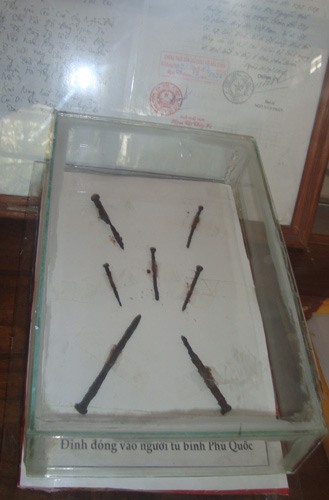 |
| The nails used to hammer into body of martyr Đặng Hồng Sơn. |
In 1985, his team was working on a National Road 1A section in Phú Xuyên District when they discovered a huge bomb dropped by American aircraft in the destruction war against the north. After it was defused, he asked leaders of the company permission to display it in his office.
In the nineties, he thought of opening a place to store war memorabilia, especially those relating to captured and imprisoned soldiers, and started collecting them. The bomb became the first item in the museum that he opened in 2006.
“We were born and raised during a time of war, so we volunteered to go to the southern front,” said Bằng. “I saw many of my comrades die on the battlefield and others get captured and tortured. These memories haunt me.
“I want this museum to help younger generations as well as foreigners understand the war, the bravery of Phú Quốc prisoners and the crimes of our enemies.”
The horror stories narrated by former Phú Quốc POWs are endless. They were subjected to barbaric torture. Boiling water was poured into their mouths, they were forced into tiger cages, their teeth were broken, and nails hammered into various parts of their bodies.
The former prisoners are also proud that such horrific treatment failed to douse their revolutionary spirit, and made them more determined to attain national liberation.
Beside the small national flag, a glass box with nine nails tells a particularly gruesome story.
Bằng collected them when he returned to the Phú Quốc Prison to repatriate the remains of martyr Đặng Hồng Sơn.
To extract information from Sơn, the enemies hammered the seven nails into his body, killing him. The nails are not just an exhibit to commemorate the martyr, they are also evidence of crimes committed by American troops, said Bằng.
A set of palm-sized books carrying handwritten political writings, cudgels and fetters used to torture prisoners are other exhibits in the museum.
Another aspect that makes the Museum of POWs special is that its staff are real-time witnesses and owners of some of the artifacts displayed.
Reunion rendezvous
It is fitting, then, that the museum has now become a place of reunion for war veterans, who gather there every day to participate in the museum’s activities and guide visitors.
The museum has received thousands of visitors since it opened, including veterans, teachers, students and young people. Most of them are deeply moved on learning the stories behind the items on display.
Former President Trương Tấn Sang visited the museum last year and praised it for educating the public, especially younger generations, on the country’s revolutionary traditions.
Phùng Văn Thao, chairman of Phú Xuyên District’s War Veterans’ Association, said, “The museum has welcomed many domestic and foreign visitors. Bằng and his former comrades have held exchanges with historical witnesses at the museum so the young people can learn from the example set by their elders.”
For 10 years now, Bằng and his comrades have held regular exhibitions and exchanges in co-operation with several agencies and sectors in Hà Nội and other localities. They have also formed a troupe and a drum ensemble to perform and communicate life skills to young people.
“We have gone to many remote areas, schools and universities to hold exhibitions and meetings to showcase the great sacrifices made by our national heroes. The younger generations should be grateful and treasure what these heroes have done for us.” — VNS
 |
| Veteran Lâm Văn Bằng, 72, used his two-storey building and his garden totally covering more than 2,000sq.m to build the Museum of POWs. VNS Photos Phúc Huy |
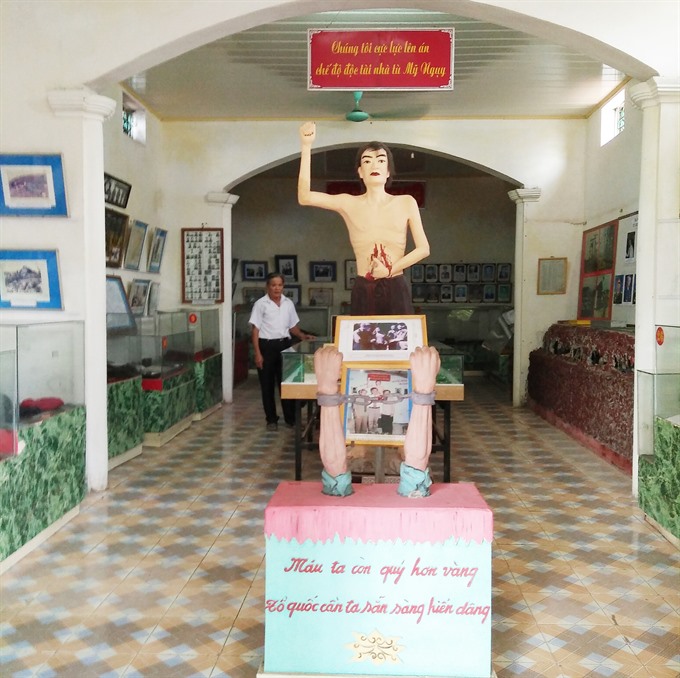 |
| The museum of captured and imprisoned revolutionary soldiers made its debut in 2006. The objects are divided into different themes, featuring the fighting spirit of generations of Vietnamese soldiers. |




